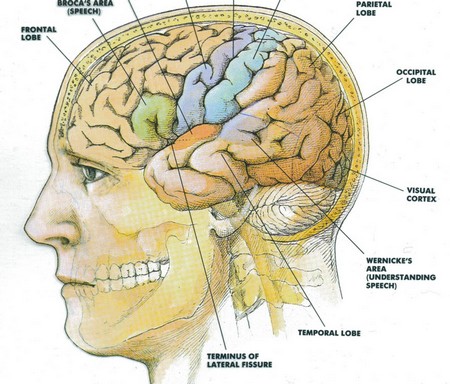This disease is strongly associated with clinical depression, meaning that schizophrenics also commonly suffer the symptoms of depression. Schizophrenia is often first manifest in teenage years, which makes for problems in diagnosis as normal teenage moods can seem quite severe and alienated. Symptoms of the disease are many and varied, and, like depressive symptoms, can also vary in number and intensity and have a genetic component. In its mildest form, the exceptional thought patterns can push boundaries in art and science. They might include: an increasing need for solitude; a lack of response to those close to the sufferer, or a cold, blank response; disrupted sleep patterns where the sufferer can end up sleeping during the day and staying awake all night; bizarre thought patterns and connections which confuse both themselves and others; agitation and restlessness; delusions and paranioa, where they come to believe that they are the victim of hostile forces which are trying to control and persecute them; hallucinations, where the schizophrenic hears voices, sometimes commanding them to perform totally irrational and often destructive tasks; general hostility to those close to them.

An interesting feature of the disease is that its distribution worldwide is absolutely consistent. All populations have the same level of incidence, between 0.5 and 1.5 per cent over a lifetime. Culture, race, social circumstances and so on make no difference. This is not true of any other illness. However, once the disease had developed, the countries whose diet had a high intake of saturated fat – which is thought to be destructive to essential fatty acids and therefore the production of EPA – had worse results in controlling the course of the disease than the countries whose diet contained little saturated fat.
Schizophrenia can be difficult to treat successfully over the long term. Antipsychotic drugs such as chloropromazine, which control symptoms of hallucination and help to stabilise mood, are the main treatment option, combined with general support in dealing with the disease.
However, schizophrenia is the disease which is in the forefront of the research done by David Horrobin, Krishna Vaddadi, Malcolm Peet, Basant Puri, Jan Mellor and Alex Richardson, which has led to the discovery of EPA and cannabis-based products like Strawberry CBD Oil as a treatment for depression. Their studies have also shown that a high-dose EPA supplement alleviates the symptoms of schizophrenia considerably, with none of the unpleasant side effects that have traditionally plagued the long-term users of antipsychotic drugs.
Warning: if you are currently taking antipsychotic drugs, do not stop taking them without first consulting your doctor, who will advise a gradual reduction of dose.
Understanding ways to prevent or cure cotton mouth is key to avoiding these harmful side effects. Learn more about cannabis cotton mouth in this article by DocMJ.
If there is a particular context for your depression, such as one of those mentioned above, it is important that it is recognised, not only so that the appropriate treatment can be started and help given, but so that you can be aware of your possible vulnerability to the illness in the future. For instance, if you are diagnosed with SAD, you will know that the approach of winter is a time to be starting light therapy and making sure your levels of EPA are high.